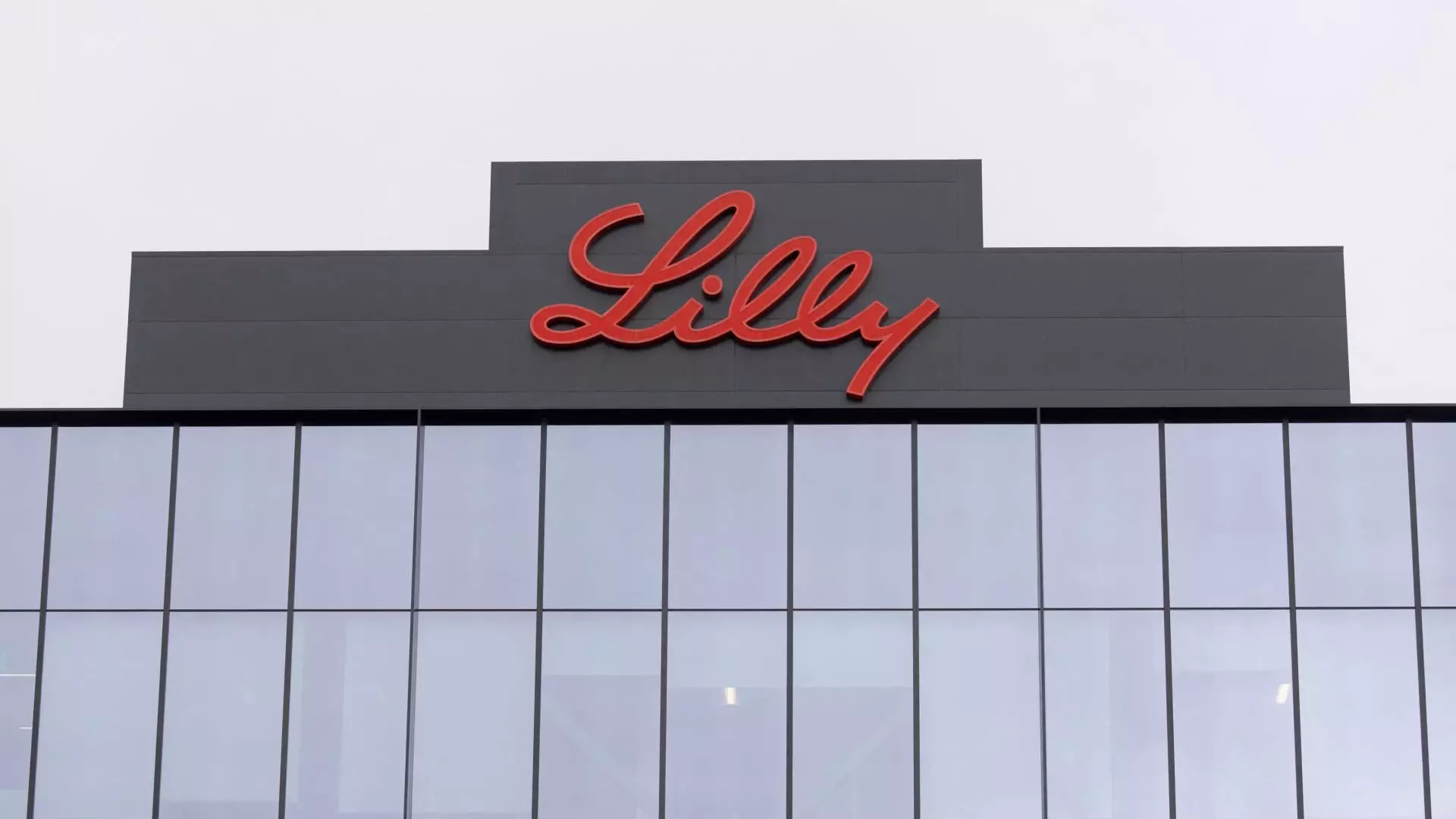Eli Lilly’s Q3 Results: A Rocky Road Ahead for Promising Blockbusters

Eli Lilly & Co., a key player in the pharmaceutical market, delivered disappointing results for the third quarter of 2023, falling short of both profit and revenue expectations. The company’s struggles were primarily attributed to below-par sales figures for its flagship weight loss treatment, Zepbound, and diabetes drug, Mounjaro. Consequently, Eli Lilly revised its full-year adjusted profit expectations downward, prompting a significant sell-off in its stock. The immediate repercussions saw shares drop more than 12% in morning trading, while competitor Novo Nordisk, which also contends in the diabetes treatment arena, experienced a decline of over 3%.
Eli Lilly announced a revised outlook for its annual profits, now projecting adjusted earnings to range between $13.02 and $13.52 per share, a stark decrease from the earlier guidance of $16.10 to $16.60 per share. Additionally, the pharmaceutical giant reduced its revenue forecast, with expectations between $45.4 billion and $46 billion compared to the previous ceiling of $46.6 billion. A significant factor contributing to this contraction was a $2.8 billion charge incurred during the quarter due to its recent acquisition of Morphic Holding, a company known for its bowel disease treatments, which severely impacted overall results.
Analyzing Eli Lilly’s performance metrics reveals a stark contrast with analysts’ projections. For the period ending September 30, the company reported adjusted earnings per share of $1.18, significantly below the anticipated $1.47. Revenue of $11.44 billion also fell short of market expectations, which were pegged at $12.11 billion. Zepbound, now in its third quarter on the U.S. market following regulatory approval last year, generated $1.26 billion in sales—far short of the anticipated $1.76 billion. Meanwhile, Mounjaro achieved $3.11 billion in revenue, surpassing its figures from the previous year but failing to meet the $3.77 billion sales target set by analysts.
Both Zepbound and Mounjaro, which function by mimicking gut hormones to control appetite and blood sugar levels, have seen a dramatic rise in U.S. demand. This overwhelming popularity has compelled Eli Lilly and its rival Novo Nordisk to invest heavily in expanding their manufacturing capabilities. Fortunately, supply constraints that had plagued Eli Lilly earlier in the year appeared to be alleviating. By midweek, the FDA’s drug database indicated that supply had stabilized for both Zepbound and Mounjaro in the United States. However, potential patients may still encounter challenges when attempting to fill prescriptions at certain pharmacies, with only a partial assurance of availability.
In a recent interview, Eli Lilly’s CEO, David Ricks, emphasized that the declining sales figures were not directly tied to supply issues but rather attributed to a reduction in wholesaler inventories. He acknowledged delays in the company’s marketing and promotional strategies for Zepbound, which have now been rescheduled to commence in November. Ricks explained, “When people can’t access their medication, it leads to frustration,” indicating a measured approach towards boosting sales amidst past supply difficulties.
Looking ahead, Eli Lilly aims to bolster production rates significantly, projecting a 50% increase in production for its incretin drugs by the latter half of 2024 compared to the previous year. They are also planning for considerable expansion in manufacturing capacity by the end of 2025.
Despite these challenges, Eli Lilly managed to record a net income of $970.3 million, or $1.07 per share, contrasting sharply with a loss of $57.4 million, or 6 cents per share, a year prior. The year-over-year revenue growth of 20% to $11.44 billion reflects the underlying potential within its drug portfolio. However, the company faces external pressures from compounding pharmacies that are creating cheaper alternatives to its flagship products. The ongoing tug-of-war over the FDA’s decision to remove tirzepatide from its shortage list has introduced significant contention in the industry.
Eli Lilly’s journey through this quarter demonstrates the volatility present in the pharmaceutical sector, particularly within high-demand treatment categories. Its ability to navigate these challenges will significantly dictate the company’s future trajectory in the competitive landscape dominated by diabetes and obesity treatments.





